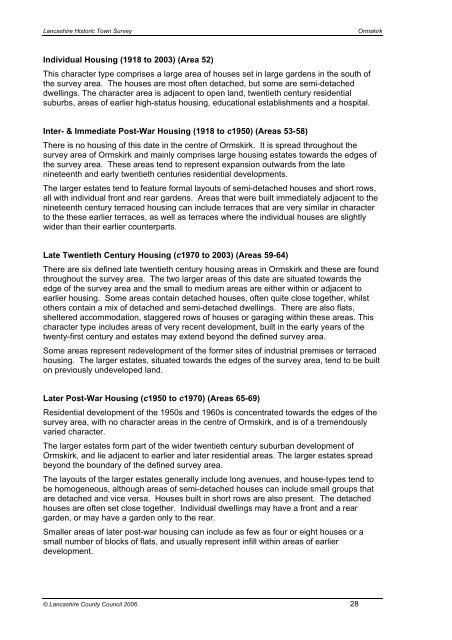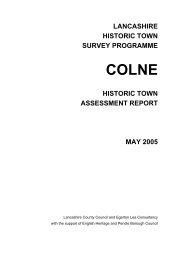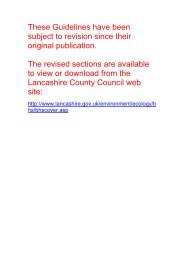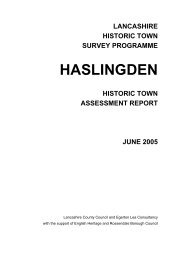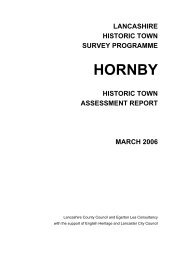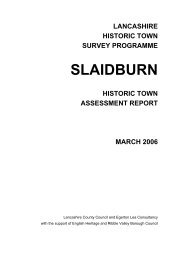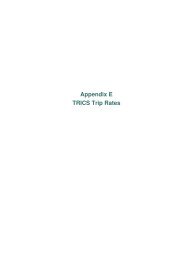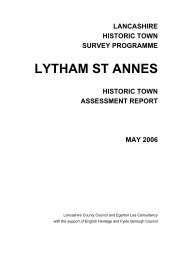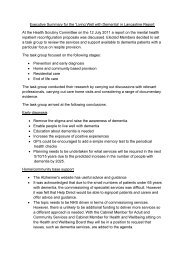ORMSKIRK - Lancashire County Council
ORMSKIRK - Lancashire County Council
ORMSKIRK - Lancashire County Council
Create successful ePaper yourself
Turn your PDF publications into a flip-book with our unique Google optimized e-Paper software.
<strong>Lancashire</strong> Historic Town Survey Ormskirk<br />
Individual Housing (1918 to 2003) (Area 52)<br />
This character type comprises a large area of houses set in large gardens in the south of<br />
the survey area. The houses are most often detached, but some are semi-detached<br />
dwellings. The character area is adjacent to open land, twentieth century residential<br />
suburbs, areas of earlier high-status housing, educational establishments and a hospital.<br />
Inter- & Immediate Post-War Housing (1918 to c1950) (Areas 53-58)<br />
There is no housing of this date in the centre of Ormskirk. It is spread throughout the<br />
survey area of Ormskirk and mainly comprises large housing estates towards the edges of<br />
the survey area. These areas tend to represent expansion outwards from the late<br />
nineteenth and early twentieth centuries residential developments.<br />
The larger estates tend to feature formal layouts of semi-detached houses and short rows,<br />
all with individual front and rear gardens. Areas that were built immediately adjacent to the<br />
nineteenth century terraced housing can include terraces that are very similar in character<br />
to the these earlier terraces, as well as terraces where the individual houses are slightly<br />
wider than their earlier counterparts.<br />
Late Twentieth Century Housing (c1970 to 2003) (Areas 59-64)<br />
There are six defined late twentieth century housing areas in Ormskirk and these are found<br />
throughout the survey area. The two larger areas of this date are situated towards the<br />
edge of the survey area and the small to medium areas are either within or adjacent to<br />
earlier housing. Some areas contain detached houses, often quite close together, whilst<br />
others contain a mix of detached and semi-detached dwellings. There are also flats,<br />
sheltered accommodation, staggered rows of houses or garaging within these areas. This<br />
character type includes areas of very recent development, built in the early years of the<br />
twenty-first century and estates may extend beyond the defined survey area.<br />
Some areas represent redevelopment of the former sites of industrial premises or terraced<br />
housing. The larger estates, situated towards the edges of the survey area, tend to be built<br />
on previously undeveloped land.<br />
Later Post-War Housing (c1950 to c1970) (Areas 65-69)<br />
Residential development of the 1950s and 1960s is concentrated towards the edges of the<br />
survey area, with no character areas in the centre of Ormskirk, and is of a tremendously<br />
varied character.<br />
The larger estates form part of the wider twentieth century suburban development of<br />
Ormskirk, and lie adjacent to earlier and later residential areas. The larger estates spread<br />
beyond the boundary of the defined survey area.<br />
The layouts of the larger estates generally include long avenues, and house-types tend to<br />
be homogeneous, although areas of semi-detached houses can include small groups that<br />
are detached and vice versa. Houses built in short rows are also present. The detached<br />
houses are often set close together. Individual dwellings may have a front and a rear<br />
garden, or may have a garden only to the rear.<br />
Smaller areas of later post-war housing can include as few as four or eight houses or a<br />
small number of blocks of flats, and usually represent infill within areas of earlier<br />
development.<br />
© <strong>Lancashire</strong> <strong>County</strong> <strong>Council</strong> 2006 28


